Gettysburg National Cemetery, originally known as Soldiers’ National Cemetery, is located in the Gettysburg National Military Park, Pennsylvania.
The cemetery was created for Union casualties from the Battle of Gettysburg in the American Civil War. The Battle of Gettysburg, which was fought between July 1 to 3, 1863, resulted in the largest number of casualties of any Civil War battle but also was considered the war’s turning point, leading ultimately to the Union victory.
This is the final resting place for more than 3,500 Union soldiers killed at Gettysburg.
*Clicking on a photo will give you a closer look!
Confederate burials did not receive placement in the national cemetery. Efforts in the 1870s by Confederate veterans’ societies eventually relocated 3,200 Confederate remains to cemeteries to the South.
Between 1898 and 1968, the government added sections to accommodate the graves of veterans from the Spanish-American War, World Wars I and II, the Korean War, and the Vietnam War. Today, more than 6,000 veterans lay at rest in the Gettysburg National Cemetery.
President Abraham Lincoln delivered his Gettysburg Address at the cemetery’s dedication on November 19, 1863.
He spoke for two minutes.
The Gettysburg Address was Lincoln’s attempt to rededicate the nation to finishing the war (“to be here dedicated to the great task remaining before us”), and to define its larger meaning, (“that this nation, under God, shall have a new birth of freedom….”).
The bronze bust of Lincoln, by sculptor Henry Bush-Brown, reveals the heavy toll the war and the nation’s suffering had upon him. Inscribed in bronze on the right is the Gettysburg Address. On the left is the letter Lincoln received inviting him to speak at Gettysburg.
No one knows, however, modern scholars place the site where President Lincoln delivered the Gettysburg Address to a crowd of some 15,000 people about 40 yards east of the soldier’s monument.
Located in the center of the cemetery, the Soldiers’ National Monument honors the fallen soldiers.
The figure of Liberty mourning her dead appears on the pedestal.
The figures of War (an American soldier who recounts the story of the battle to Clio); Clio, the Muse of History (records, with stylus and tablet, the achievements of the battle and the names of the honored dead); Plenty (woman with a sheaf of wheat and the fruits of the earth that typify peace and abundance as the soldier’s crowning triumph) and Peace (American mechanic and his tools) surmount the base.
Plaques are dotted throughout the cemetery and contain lines from the poem, “Bivouac of the Dead”, written by Theodore O’Hara, a poet and an officer for the United States Army in the Mexican–American War. He was also a Confederate colonel in the American Civil War.
The New York State Monument was dedicated on July 2, 1893.
During the American Civil War, over 475,000 soldiers in the Union Army were from the state of New York, more than any other state. New York constitutes the largest state group in the Gettysburg National Cemetery.
The statue at the top is of a woman, resembling one of the women found in the Coat of arms of New York, holding flowers for the dead in one hand and a staff in the other. She stands approximately 13 feet (4.0 m) tall and faces towards the New York section of the National Cemetery.
Above the base, wrapped around the start of the column is a ring of bronze tablets that depict four scenes from the battle: the wounding of General Daniel Sickles, the wounding of General Winfield Scott Hancock, the death of General John F. Reynolds, and a war council convened by General Henry Warner Slocum.
If you like American Civil War history, you should definitely add the Soldiers’ National Cemetery to your bucket list of places to visit. There is so much more than I can share in a blog post!
Gettysburg Shriver House Museum
See the world around you!





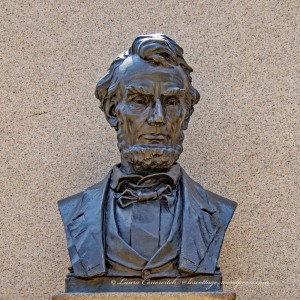



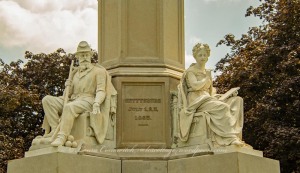






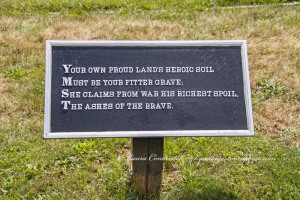



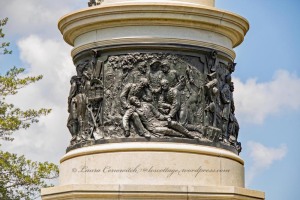



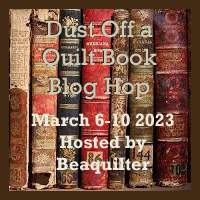

So interesting and I learn so much from these posts 🙂
LikeLike
I will have a wonderful journal of the epic road trip to look back on when I finish with these posts! Thanks for sticking with me, Sharon! 🙂
LikeLiked by 1 person
I love this post too! We drove by Gettysburg on our way home, but didn’t stop – perhaps on a future trip!!
LikeLike
It was overwhelming to me at first, but once I got my bearings I was able to enjoy it more. The monuments are amazing…so much detail! There is a lot to take in…even spending a couple of days here was not enough, especially if you are a history buff!
LikeLike
Pingback: Gettysburg National Military Park | LC's Cottage